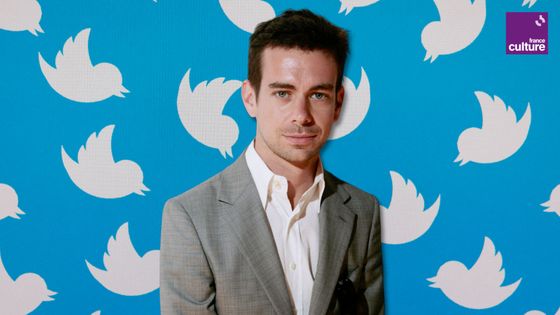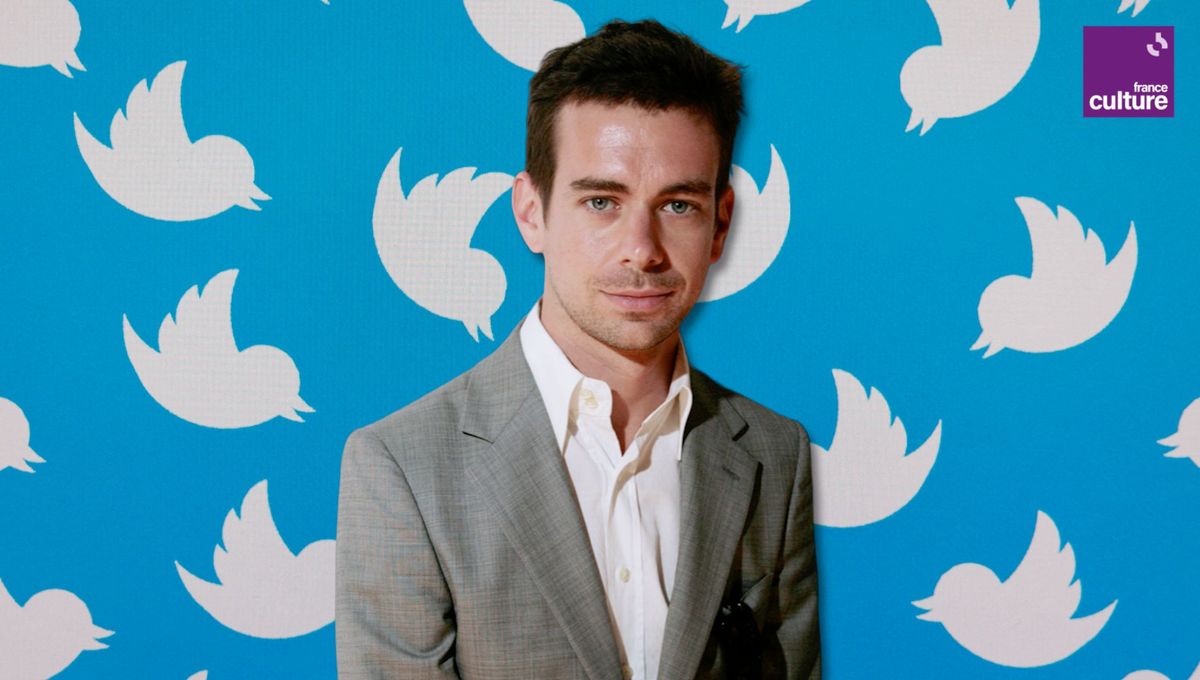
“Twitter is a microblogging platform. It is a medium which, structurally, when it is built around these 140 signs, will bring with it a way of expressing oneself that does not exist anywhere else” according to Olivier Ertzscheid, researcher in information and communication sciences. Let’s come back with him to the genesis of this social network which has upset our consumption of information. 5th and last episode of our series devoted to the origin of digital giants, the 1st episode of which was devoted to the
ideological genealogy from Wikipedia the second in
myth of the entrepreneur embodied by the founder of Apple, Steve Jobs,
the third to Netflix And
the fourth to Google.
At the origin of Twitter in 2006, the American programmer Jack Dorsey is interested in instant messaging applications. He developed a passion for computer tools very early on: at only 15, he developed open access software that is still used today. For Olivier Ertzscheid, Dorsey invents “the first software that will make it possible to streamline the traffic of taxis or emergency vehicles such as ambulances“. The researcher notes that Jack Dorsey is thinking “in terms of flow” and seeks to “ensure that information arrives quickly at the right time and to the right people.”
Jack Dorsey went on to study at New York University and in 2000, he set up a company in the same field of dispatching taxis and emergency services. At the same time, the phenomenon of blogs is taking hold on the Internet and the use of smartphones is exploding. Jack Dorsey then thinks of a way to instantly share messages with as many people as possible. According to Olivier Ertzscheid, “it is on the basis of this reflection around SMS that Dorsey will have the idea of this microblogging platform, which allows the publication of short messages.“
To be able to carry out his project, Dorsey collaborates with Odeo. Based in San Francisco, this podcast company has been in decline since the launch of Apple Podcasts, and its founders are looking to create new services.
The challenges of social networks
2 min
140 characters, an efficient ratio
With the help of the Odeo team, Jack Dorsey builds a prototype of Twitter. And a few weeks later, he marked the birth of the platform by sending his first tweet on March 21, 2006. The name “Twitter”, initially written without the vowels, refers to “a short burst of inconsequential information, chirping of birds”.
What makes the identity of Twitter is the brevity of the tweets, initially it was 140 characters, a template which, according to Olivier Ertzscheid represents “the most efficient ratio to be able to distribute a maximum of messages while occupying a minimum of memory space in the applications.” For the researcher, this limitation of the number of signs can be used in a playful way, but “She is a form that is very well suited to witticisms, even to outbursts that can sometimes be verbal aggression…”
From its inception, the social network attracted many users. In 2007, one of them suggested using a “hashtag” to group certain messages. This suggestion is well received by Twitter, which will optimize its use. The hashtag is invented to meet an organizational need. A lot of people are exchanging in real time crosswise on very different topics, so you have to “put some order inside this chaos recalls Olivier Ertzscheid. And one way to bring order to the conversation is to use this little number sign and associate it with keywords that the users themselves determine.”
A plane in the Hudson
It was in 2009 that Twitter took on a global dimension thanks to a milestone event. On January 15, 2009, a plane crash-landed on the Hudson River in New York. A man films the scene with his mobile phone and posts the video on his Twitter account. Olivier Ertzscheid returns to the repercussions of this news item for the blue bird platform: “From there will emerge what has since been called “citizen journalism”, that is to say this idea that all you need is a smartphone in your pocket and an application that allows you to share content quickly. so that everyone can document what they see in real time.” Twitter then moved into the smartphones of many users – and even that of political figures, such as the President of the United States at the time, Barack Obama.
As for Jack Dorsey, he had a rather chaotic career as a business leader: he led Twitter before being dismissed in 2008 by the board of directors who deemed his management unsatisfactory, then he returned to the controls of the network social in 2015. Although he has now stepped down as CEO, Jack Dorsey is still considered the founding father of Twitter.
Twitter embodies the platform “who best embodies this representation we have of the history of the web and the Internet, that is to say the ability to bring together in the same space the best… like the worst of humanity“, says Olivier Ertzscheid. The researcher further explains that on Twitter, causes are born, defend themselves, because the social network has this ability to “freeze media attention“But he also points out that this reality comes with moderation issues,”of extremist speeches which are not or little treated“And remember that Twitter was criticized a lot in the days of Jack Dorsey, as it is today in the days of Elon Musk,”on the weakness and carelessness of these policies of moderation.“
The best of worlds
58 mins
At the origin of the digital giants, the series
– “
At the origin of Wikipedia, the opposition between two visions of knowledge“
– “
Are Steve Jobs and the Silicon Valley Entrepreneurs Imposters?“
–
“At the origin of Netflix: a genealogy of laziness”
–
“At the origin of Google, a futuristic ambition”

